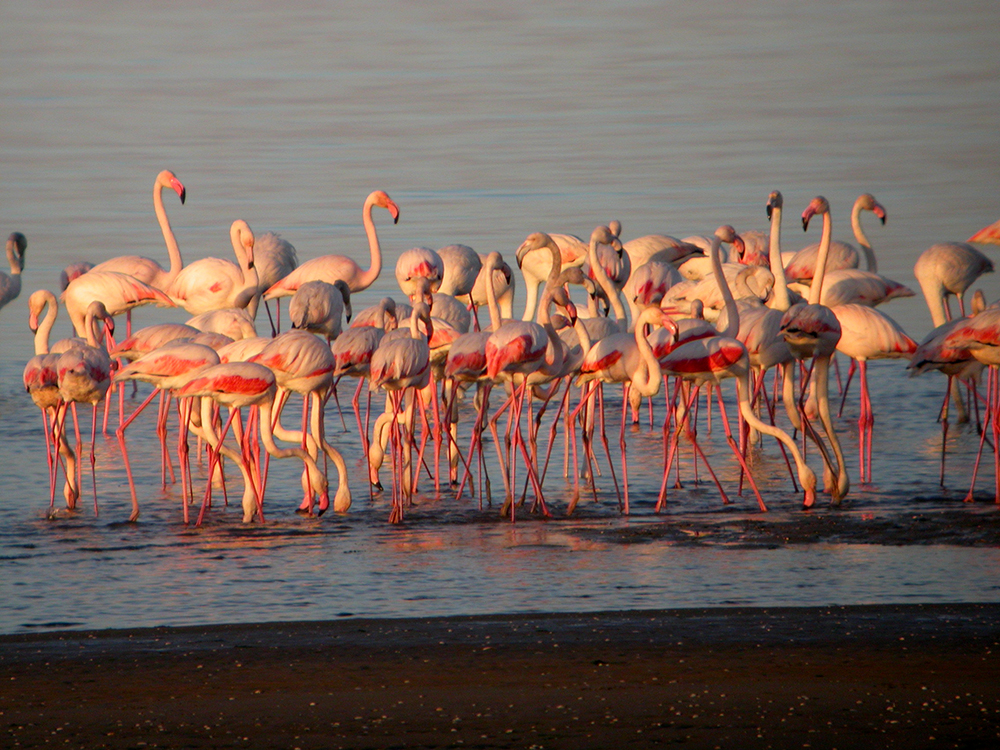Environmental Concerns
Lusoponte's environment protection program was carried out on a scale never seen before in Europe. The monitoring and surveillance work by the Environmental Monitoring Study Centre – CEMA - is done in conjunction with external consultants who are eminent in their respective fields. The various fields continuously studied by these experts include water and air quality, flora and fauna, bird life, marine life, archaeology, and noise levels.
Vasco da Gama bridge runs through 400 hectares of the partially abandoned Samouco Salt Pans, an important breeding ground for a number of protected species such as the Black Winged Stilt (Himantopus himantopus), the Little Tern (Sterna aíbifrons) and the Kentish Plover haradrius alexandrinus).

As part of its commitment to minimize the environment impact of the project the Portuguese Government agreed with the European Union to establish the area as a nature reserve and Lusoponte has implemented a comprehensive recovery program which includes the restoration of 43 sluice gates, several buildings and scores of dykes as well as the general cleaning of the pans and other debris.
A 15th century chapel, the Capela da Nossa Senhora da Conceição, located between Alcochete and Samouco about 200m from the bridge, has also been restored to its former glory. During the refurbishment important ceramic tiles and archaeological artefacts were uncovered including a brass medal embossed with image of a saint dating from around the 17th century. Also revealed was a 17th century decorative fresco painting in the arch of a Gothic window which had lain concealed by walls built in a 19th century modification to the interior of the building.
Archaeological excavations near the South Access of the bridge led to the discovery of a Middle Palaeolithic site considered to be of exceptional interest and the unearthing of numerous artefacts and implements.
The measures to minimize noise levels and air pollution include landscaped acoustic barriers and there is provision silt rainwater running off from the South Viaduct at the Samouco Salt pans area.
The environment design aspect created widespread interest and this has been met by an informative newsletter published by CEMA, which is sent to schools, universities, municipalities, and other interested organizations.
In respect of socio-economic issues, LUSOPONTE carried out a careful management program regarding expropriations and rehousing. This program, a task usually carried out only by government agencies, was for the first time carried out by a private company. This program led significant improvements in live conditions of more than 1000 inhabitants.
Nearly 300 Portuguese families, living in shanties, with no minimum health conditions, were rehoused in apartments built by LUSOPONTE, at the new Quinta do Carmo resort, or indemnities were paid.
LUSOPONTE also provided a bright new spacious day centre for the elderly to replace the former centre at Moscavide, a poorly equipped and cramped building which had to be demolished. The new facilities include a library, meeting room, bar, canteen, medical clinic and laundry.
A new primary school with modern classrooms, gymnasium and leisure facilities was also built at Portela to replace the one demolished on the boundary of the Praça José Queirós access and another school in Moscavide was completely refurbished.